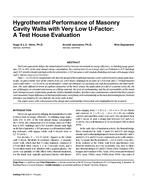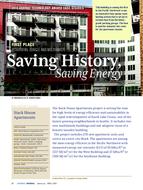Noise and vibration problems in rotating systems powered by energy sources with a significant vibrational component– such as the single-phase induction motor — are sometimes caused by resonant response of rotating parts, e.g., fans, blowers, or start switch mechanisms, to the source’s vibratory forces and/or torques. These problems commonly occur in single-phase induction motor applications, in which objectionable noise or vibration is caused by the torque pulsations and/or axial forces, singly or in combination, which characteristically occur at even multiples of line frequency. Vibrational response in a third, radial, mode may result from unbalanced radial (“two-pole”) magnetic forces at any of a multiplicity of possible frequencies. The magnitude, pole structure, and frequency of radial magnetic forces depend primarily upon line frequency; rotor slip; numbers of pole pairs, rotor slots, and stator slots; and rotating and stationary air-gap dissymmetries which are the normal result of production tolerances endemic to the manufacturing process.
Noise traceable to the electromagnetic forces inherent in single-phase induction motor applications includes pure tones radiated from the surfaces of air-handling devices attached to the output shaft, which exhibit forced vibration (usually resonantly amplified) over surface areas large enough to radiate sufficient acoustical energy to produce objectionable noise levels in the vicinity of the device.
Pure tones are known (Ref 2) to be more annoying than noise of the same levelwhich has a broadband (distributed) spectrum such as the "white” noise characteristically produced by moving air. Pure-tone annoyance is sometimes further increased in induction motor applications by the presence of the low-frequency variation in emitted noise level caused by “beats” between pure tones which have a small frequency difference attributed to rotor slip.
Pure-tone noise problems occur not infrequently in air-handling devices or systems used in low-noise environments such as residences or offices. Customer complaints about such applications, including fan and. heating or air-conditioning systems, are likely whenever pure-tone components exceed the broadband background levels by an objectionable amount. The definition of "objectionable" is quite variable and depends on the amount by which the pure tones exceed the other components of noise energy in nearby parts of the spectrum, the frequencies, the application, and the expectations, personalities, and inter-relationships of the individuals involved in diagnosing and defining the problem. The interaction among the customers, the sales and technical staffs, and management of both the motor-manufacturer and the maker of the air-moving device is difficult to quantify, highly-variable, and is crucial in determining whether the noise emitted in a given application will be defined as a "problem."
Citation: ASHRAE Transactions, Volume 83, Part 1, Chicago, IL
Product Details
- Published:
- 1977
- Number of Pages:
- 11
- File Size:
- 1 file , 670 KB
- Product Code(s):
- D-CH-2445


